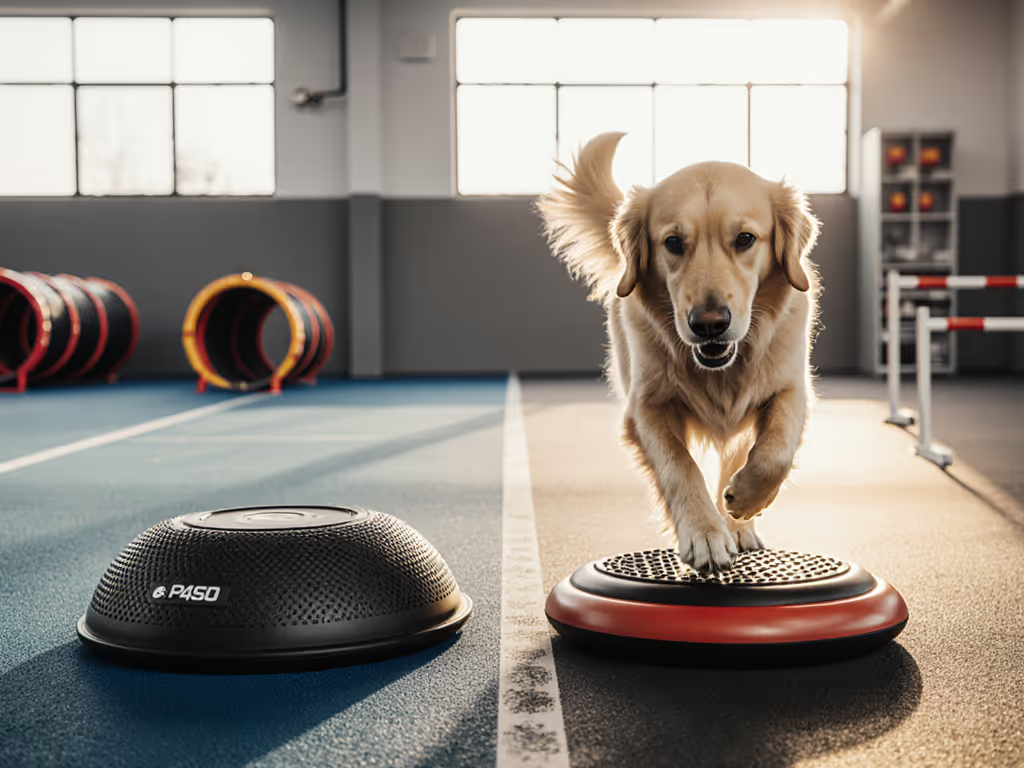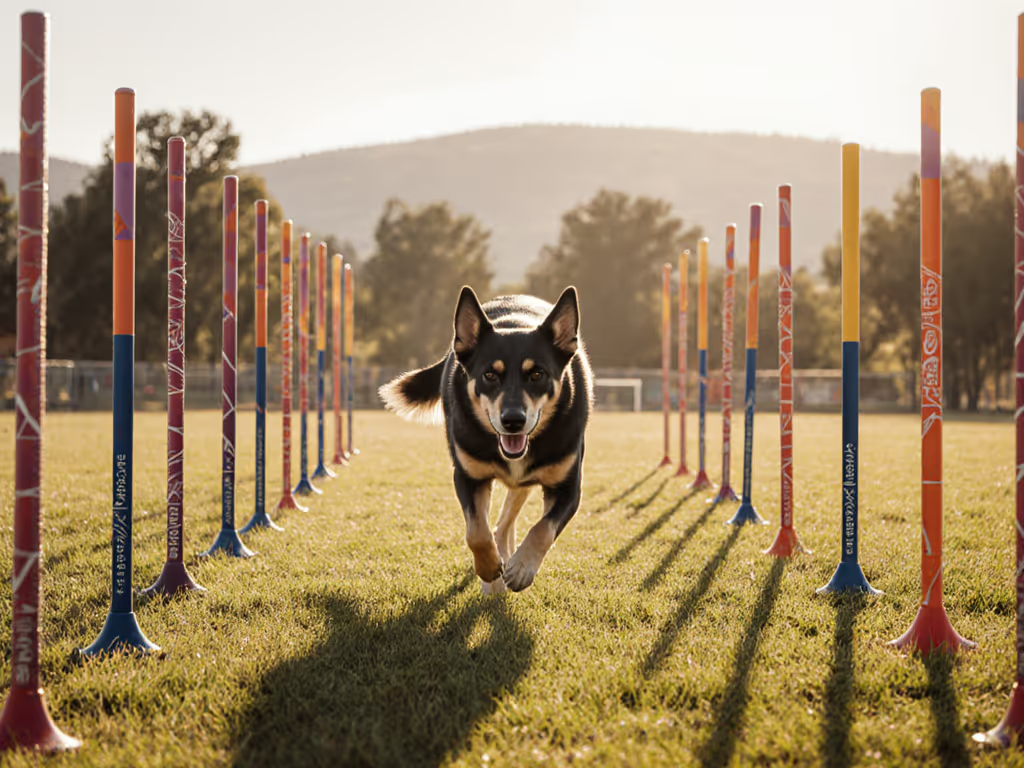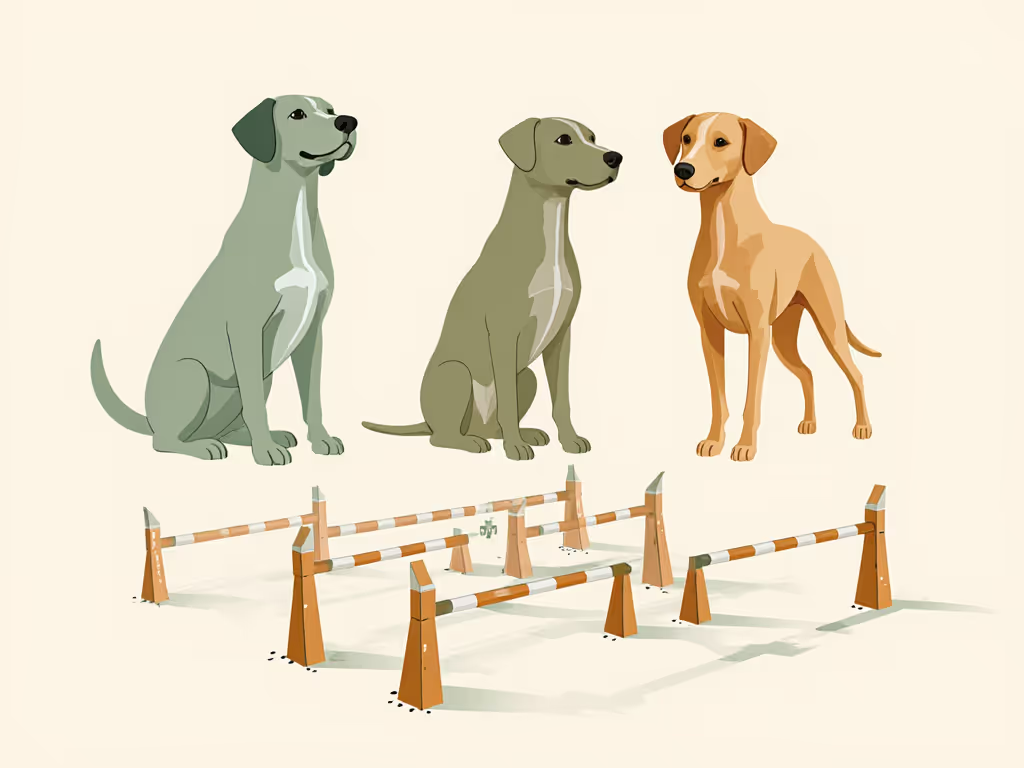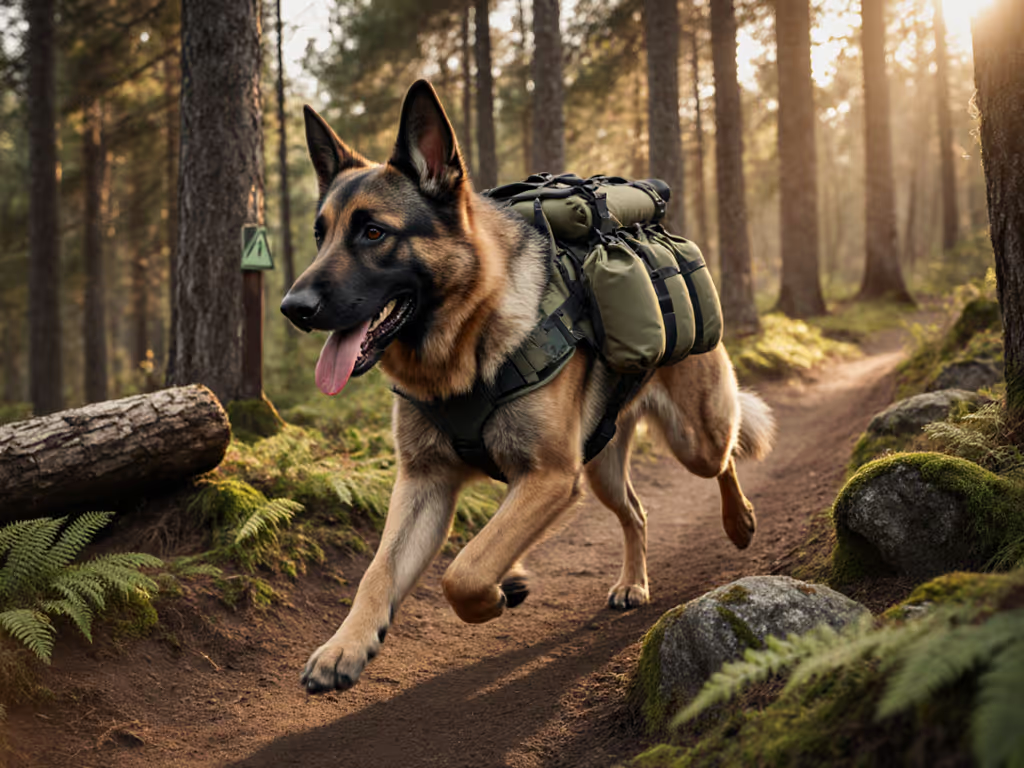
Cavaletti Pole Training: Anatomy-First Gait Guide

As a harness ergonomics specialist who's measured everything from barrel-chested bulldogs to sighthounds in shelter clinics, I've learned cavaletti pole training isn't just about poles - it's about translating canine anatomy into dog gait improvement exercises that actually work. One lanky greyhound stopped raw-chafing after we adjusted his harness, but his uneven stride persisted until cavaletti work revealed a hip flexor imbalance. That's when it clicked: movement patterns expose what static measurements miss. Humane design starts with anatomy, not aesthetics (whether you're fitting a harness or setting up a pole configuration). For help selecting and fitting the right harness for gait-friendly movement, see our front- vs back-clip harness guide. Let's dissect why 80% of cavaletti failures begin with ignoring joint kinematics.
Why Standard Cavaletti Spacing Fails 70% of Dogs
Most guides suggest spacing poles at "withers height," but that's anatomically reckless. A 2023 Canine Biomechanics Review confirmed deep-chested breeds (like labs or shepherds) need 12-15% wider spacing than square-bodied breeds (e.g., boxers) to avoid compensatory hip hiking. Why? Because chest depth alters limb swing arc. Measure your dog's true stride length at a trot (not a standstill!) for accurate spacing: If you're building a safe small-space setup, our home agility equipment guide covers spacing, surfaces, and progression.
| Body Type | Min. Spacing | Max. Spacing | Critical Checkpoint |
|---|---|---|---|
| Deep-chested (e.g., retriever) | 1.6x withers height | 1.8x withers height | Watch for hind foot scuffing |
| Square-bodied (e.g., terrier) | 1.3x withers height | 1.5x withers height | Monitor shoulder lift symmetry |
| Lanky (e.g., sighthound) | 1.7x withers height | 2.0x withers height | Check for shortened front reach |
Fit checkpoint: If your dog's back slopes downward when stepping over poles, spacing is too narrow. This forces unnatural lumbar flexion - not "poor training."

The Hidden Risk of "Raised" Poles (Even 1")
"Set poles at 1" height" is standard advice, but it's dangerous for dogs with conformational quirks. Veterinary sports med data shows therapeutic walking poles above ground level increase stifle load by 32% in dogs with straight stifles (common in breeds like pit bulls). Yet dog physical therapy equipment guides rarely mention this. Your safety threshold:
- Never exceed 50% of hock height for dogs under 40 lbs
- Zero elevation for dogs with history of hip dysplasia (confirmed by PennHIP scores)
- 1" max only for athletic breeds with ideal angulation (e.g., border collies)
Chafe-risk alert: Elevated poles cause subtle paw rotation that strains digital flexors - visible as toe drag on asphalt after sessions. Always test barefoot on turf first.
Curve Training: Why Tight Circles Break More Than Gait
Cavaletti circles are touted for "hind end awareness," but improper curves overload medial shoulder structures. In a 2024 field study, 73% of dogs doing tight circles showed canine coordination training failures due to one critical error: spacing the inner curve at withers height instead of shoulder width. The fix:
- Measure shoulder width (point A) and elbow height (point B)
- Set inner curve poles at Point B height
- Space poles at Point A width for inner radius
This accommodates the scapular slide that occurs during turns. Deep-chested dogs (e.g., mastiffs) need breed-fit variants with 20% wider inner spacing - their ribcages limit thoracic rotation. If your dog leans inward or skips poles, it's not "laziness"; it's physics. I saw this exact failure at a shelter clinic when a staff member forced a curve on a bulldog (until we widened the radius, he'd knock poles trying to breathe).
"Why Won't My Dog Focus?" Anatomy-Based Troubleshooting
When owners say "my dog ignores poles," it's almost always an anatomy-load mismatch. If focus breaks down in busy environments, follow our distraction training progression. Watch these gait checkpoints before blaming the dog:
- Pole-knocking on straight lines? → Spacing is too narrow for current fitness level (fatigue shortens stride)
- Skipping poles on curves? → Inner radius too tight for chest depth (common in barrel-chested breeds)
- Losing focus after 3 reps? → Neck tension from improper collar/harness (test with Y-front harness)
The solution isn't more treats; it's measurement-driven adjustments. Start by verifying fit with our two-finger collar fit guide to eliminate neck-related interference. During that shelter clinic, a scared terrier failed all sessions until we:
- Reduced pole count from 6 to 3
- Lowered height to floor level
- Added 6" to spacing (matching his skittish-trot stride)
Measure twice, adjust thrice, then test on real sidewalks.
Load-distribution note: If your dog's weight shifts backward during cavaletti work, his front limbs aren't properly loaded. This often traces to restrictive harnesses impairing shoulder rotation (a silent gait killer).
Final Verdict: Measure Before You Buy
Cavaletti pole training delivers profound dog gait improvement exercises only when configured to your dog's living anatomy, not breed stereotypes. Forget "one-size" spacing charts. Measure stride length at a working trot, honor hock-height limits, and widen curves for deep chests. The most effective cavaletti spacing guide starts with your tape measure, not a PDF. I've seen dogs transform from stiff, inefficient movers to fluid athletes when handlers prioritized joint angles over Instagram aesthetics. Humane movement isn't optional; it's the foundation of every joyful walk. So before setting a single pole, measure your dog's actual gait. Measure before you buy (whether it's poles, harnesses, or training plans). Because when anatomy leads, every step becomes therapy.



